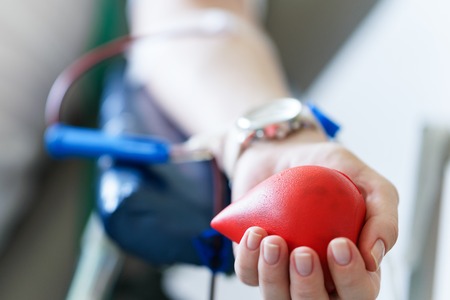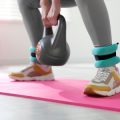Introduction to Resistance Bands and Weights in Rehabilitation
In the landscape of physiotherapy across the UK, resistance bands and weights have become fundamental tools for supporting individuals through post-surgery recovery. These accessible and versatile aids are regularly integrated into rehabilitation programmes by NHS and private physiotherapists alike, forming the backbone of many tailored exercise routines. Whether recovering from joint replacements, ligament repairs, or orthopaedic surgery, patients benefit from the adaptability that resistance bands and weights offer, allowing gradual progression tailored to their unique needs. The structured use of these tools encourages strength rebuilding, mobility enhancement, and confidence restoration—all crucial aspects of regaining independence after an operation. Through careful guidance from healthcare professionals, British patients are empowered to take an active role in their healing journey, with resistance training playing a pivotal part in safe and effective rehabilitation.
2. Assessing Individual Needs and Safety Considerations
When integrating resistance bands and weights into post-surgery rehabilitation programmes, a personalised approach is essential. Each patient’s recovery journey is unique, shaped by factors such as the type of surgery, pre-existing conditions, age, and overall fitness level. According to NICE (National Institute for Health and Care Excellence) guidelines, tailoring rehabilitation plans ensures both efficacy and safety, reducing the risk of setbacks or complications.
The Importance of Tailored Rehabilitation Plans
Developing an individualised rehabilitation plan enables healthcare professionals to address specific needs, goals, and limitations. For example, a patient recovering from knee replacement surgery will require a different set of exercises compared to someone rehabilitating after shoulder surgery. By carefully assessing mobility, strength, pain levels, and functional goals, therapists can select suitable exercises with resistance bands or weights to optimise recovery outcomes.
Key Assessment Factors
| Assessment Area | Description | Considerations |
|---|---|---|
| Surgical Site | Location and type of operation | Avoid stress on healing tissues; adapt intensity accordingly |
| Pain & Swelling | Current symptoms at rest and during movement | Monitor closely; modify exercise if discomfort increases |
| Range of Motion | Flexibility and joint mobility post-surgery | Select exercises that support gradual improvement without overstretching |
| Strength Level | Baseline muscle strength assessment | Begin with lower resistance; progress as tolerated |
| Functional Goals | Daily activities important for independence and quality of life | Create a plan that supports return to meaningful activities |
Safety Precautions in Practice
Incorporating resistance bands and weights should always be done with caution. Patients must be educated on correct form to prevent injury, especially when regaining strength after surgery. The use of proper equipment—such as non-slip mats or supportive footwear—is encouraged. Resistance bands should be checked regularly for wear or damage, while weights must be appropriate for the individual’s current capability.
NICE-Recommended Safety Guidelines:
- Supervision: Early stages of rehabilitation should be supervised by a qualified professional.
- Pain Management: Exercises should never cause sharp or persistent pain; stop immediately if this occurs.
- Progression: Increase resistance gradually according to recovery milestones set by the care team.
- Monitoring: Record responses to each session and communicate concerns promptly with healthcare professionals.
- Environment: Ensure a safe exercise environment free from hazards or tripping risks.
The Value of Collaboration with Healthcare Professionals
A multidisciplinary approach is central to safe and effective rehabilitation in line with NICE recommendations. Regular communication between physiotherapists, occupational therapists, GPs, and patients ensures that all interventions are evidence-based and responsive to changing needs. This collaborative ethos not only fosters trust but also empowers individuals to take an active role in their recovery journey, maximising the benefits of resistance training while minimising potential risks.

3. Benefits of Integrating Resistance Bands
When considering post-surgery rehabilitation programmes, resistance bands offer a unique blend of benefits that can be especially valuable in the early stages of recovery. Their gentle yet effective approach to strengthening and mobilisation makes them a favourite among physiotherapists across the UK. By incorporating resistance bands alongside traditional weights, patients can experience a more gradual and supportive return to function.
Gentle Mobilisation for Early Recovery
One of the foremost advantages of resistance bands is their ability to provide low-impact resistance, allowing for controlled movement without placing excessive strain on healing tissues or joints. This gentle mobilisation is crucial during the initial phase post-surgery, where protecting vulnerable areas while still encouraging movement helps prevent stiffness and supports circulation. For many recovering at home in Britain, this means being able to start their exercises sooner, with confidence and safety.
Progression of Exercises Tailored to Individual Needs
Resistance bands come in various strengths and sizes, making it easy to tailor the level of challenge as strength and mobility improve. This scalability ensures that patients can gradually progress through different stages of rehabilitation without feeling overwhelmed or risking overexertion. British physiotherapists often recommend starting with lighter bands before moving to increased resistance, providing a structured pathway that aligns with NHS guidelines for safe recovery.
Convenience for Home Use
Another significant benefit is the portability and simplicity of resistance bands. Unlike bulky gym equipment or free weights, bands are lightweight and easy to store, making them ideal for those recovering at home—whether in a cosy London flat or a countryside cottage. Their versatility means they can be used almost anywhere, supporting consistency in rehabilitation which is so important for long-term outcomes.
Supporting Independence and Confidence
Incorporating resistance bands not only fosters physical recovery but also empowers individuals to take an active role in their own rehabilitation journey. With clear guidance from healthcare professionals, patients can perform exercises independently, building confidence as they notice improvements week by week. This sense of empowerment is invaluable in both physical healing and overall wellbeing.
4. Strength Training with Weights: Best Practices
Introducing free weights into a post-surgery rehabilitation programme requires careful timing and a tailored approach. For most individuals in the UK, weights are typically introduced once sufficient baseline strength and joint stability have been established through resistance band work and bodyweight exercises. Physiotherapists often recommend waiting until swelling has subsided, pain is well-managed, and the patient demonstrates consistent control over their range of motion.
When to Introduce Free Weights
The decision to start weight training depends on the type of surgery, patient progress, and clinical guidelines. As a gentle rule of thumb, light hand weights (0.5–2 kg) may be considered around 6–8 weeks post-operation for lower limb surgeries, or slightly earlier for upper limb procedures, provided there are no complications. Always consult your NHS physiotherapist or private practitioner before progressing.
How to Integrate Weights: Step-by-Step
| Stage | Example Exercise | Recommended Weight | Frequency |
|---|---|---|---|
| Initial Introduction | Bicep curls with dumbbells | 0.5–1 kg | 2 x 8 reps, twice weekly |
| Progression Phase | Seated shoulder press | 1–2 kg | 2 x 10 reps, three times weekly |
| Advanced Integration | Standing squats holding weights | Increase by 0.5 kg as tolerated | 3 x 10 reps, three times weekly |
Practical Examples for UK Rehabilitation Settings
If you’re attending NHS community rehab sessions or working with a local physio in England, Scotland or Wales, you might begin with simple dumbbell lifts while seated to reduce fall risk. In home-based programmes, ensure your environment is clear of hazards and consider using household objects like small water bottles as makeshift weights if access to equipment is limited.
Key UK-Based Recommendations for Safe Progression
- Always warm up with light aerobic activity and dynamic stretches before lifting weights.
- Avoid holding your breath; breathe out during effort phases (e.g., lifting) and in during relaxation (e.g., lowering).
- If discomfort, swelling or fatigue increases after introducing weights, reduce intensity or return to resistance bands temporarily.
- Your local NHS physio can help you track progress using outcome measures such as grip strength or chair stand tests.
- Pace progression by increasing repetitions first before adding more weight.
This gradual approach ensures safety and encourages steady recovery while respecting each individual’s unique journey post-surgery in a supportive British healthcare context.
5. Blending Bands and Weights: Structured Programme Design
When considering the integration of resistance bands and free weights in post-surgery rehabilitation, it is essential to create a programme that is both structured and flexible enough to adapt to individual needs. A holistic approach recognises that every person’s recovery journey is unique, and the blend of equipment should support gradual progress without overwhelming the healing body.
Guidance for Combining Resistance Bands and Weights
Begin by assessing your current mobility, pain levels, and medical guidance from your physiotherapist or healthcare professional. Resistance bands are particularly useful in the early stages of rehabilitation because they provide gentle, adjustable resistance and can help reintroduce movement without placing undue stress on joints or healing tissues. As confidence and strength improve, light hand weights or ankle weights can be incorporated to further challenge muscles and support bone health.
Sample Routine for Progressive Rehabilitation
A typical weekly plan might include three sessions focusing on different muscle groups. For example, start each session with gentle warm-up stretches using a resistance band—such as seated rows or shoulder abductions. Progress to banded squats or standing leg presses to build lower limb stability. Once these movements feel comfortable, add one or two sets with light free weights (1-2kg), such as bicep curls or overhead presses, ensuring all exercises are performed slowly and with proper form.
The Importance of Individual Adaptation
No two recoveries are alike, so it’s vital to listen to your body and adjust routines accordingly. Some days you may feel able to handle slightly more resistance, while on others you may need to scale back. The key is consistent communication with your care team and being kind to yourself throughout the process. Remember, rest days are as important as active ones—allowing muscles and connective tissues time to recover fosters long-term progress.
Integrating both bands and weights offers versatility and can make rehabilitation more engaging. By tailoring your routine to your specific recovery rate and comfort level, you encourage both physical healing and emotional resilience—a truly British approach rooted in patience, perseverance, and self-compassion.
6. Monitoring Progress and Encouraging Adherence
Ensuring a smooth recovery journey with resistance bands and weights relies heavily on tracking progress and maintaining motivation throughout rehabilitation. Regular monitoring not only helps patients see their improvements but also provides healthcare professionals with valuable insight to adjust programmes as needed. Here are some gentle and practical suggestions for supporting individuals after surgery.
Tracking Improvements: Simple and Effective Methods
Begin by encouraging patients to keep a daily or weekly log of their exercises, noting the type of activity, duration, number of repetitions, and perceived difficulty. Using simple charts or smartphone apps can make this process easy and engaging. Additionally, scheduled assessments—such as measuring range of motion, strength tests, or even observing day-to-day activities like walking or climbing stairs—offer tangible evidence of progress. These small milestones can be incredibly uplifting during the recovery period.
The Role of Community Health Teams
In the UK, community health teams play an invaluable role in post-surgery support. Physiotherapists, occupational therapists, and community nurses regularly visit patients at home or in local clinics. Their ongoing encouragement, expertise, and ability to adapt exercise plans ensure that rehabilitation remains safe and tailored to each individual’s needs. Moreover, these professionals often serve as a bridge between hospital care and returning to everyday life, fostering trust and reassurance during vulnerable times.
Motivational Strategies for Consistency
Maintaining motivation can be challenging, especially when progress seems slow. Here are some nurturing strategies to encourage adherence:
Setting Achievable Goals
Work together to set realistic short-term goals that reflect what matters most to the patient—whether it’s managing daily tasks independently or enjoying a walk in the park again. Celebrate every achievement, no matter how modest.
Peer Support and Group Sessions
Joining group rehabilitation classes at local leisure centres or community hubs can foster a sense of belonging and shared purpose. In the UK, many councils offer gentle exercise groups specifically designed for those recovering from surgery.
Family Involvement
Encourage loved ones to take part in home exercises or simply provide gentle reminders and emotional support. A shared cup of tea after a session can be just as important as the exercise itself.
A Gentle Reminder
Recovery is rarely linear. Remind patients that good days and setbacks are both part of the process. With patience, kindness, and consistent monitoring, integrating resistance bands and weights into rehabilitation can empower individuals on their journey back to confidence and independence.
7. Cultural and Psychological Considerations in the UK
Recovery after surgery is not only a physical journey but also an emotional one, deeply influenced by cultural and psychological factors unique to the UK. For many individuals, integrating resistance bands and weights into post-surgery rehabilitation programmes can evoke feelings of vulnerability, uncertainty, and hope. It is essential to recognise these emotions and provide compassionate support tailored to each person’s experience. In British culture, where stoicism is often valued, some individuals may feel reluctant to express discomfort or ask for help. Encouraging open dialogue about challenges and progress can foster a more supportive environment, helping individuals feel seen and understood.
Family Involvement and Support Networks
The role of family is central in the recovery process within the UK context. Family members often act as informal carers, providing both practical assistance and emotional encouragement. Inviting loved ones to participate in rehabilitation sessions—whether by learning about exercise routines with resistance bands or understanding weight training safety—can strengthen bonds and enhance motivation. This collaborative approach respects the British value of community spirit while ensuring that no one feels isolated during their journey back to independence.
Community-Based Approaches: The Heart of British Rehabilitation
Community-based programmes are particularly significant in the UK, reflecting a broader commitment to inclusivity and shared well-being. Local health centres, social clubs, and charitable organisations often offer group classes or peer-led support groups focused on safe movement and gradual strengthening using resistance bands and weights. These settings encourage social interaction and mutual encouragement, reducing the risk of loneliness—a known challenge for many recovering from surgery. Embracing a person-centred approach means adapting exercises to individual abilities while respecting personal preferences and goals, reinforcing dignity throughout the process.
Empowering Recovery Through Person-Centred Care
Ultimately, successful integration of resistance bands and weights in post-surgery rehabilitation relies on understanding each individual’s story—their fears, hopes, culture, and values. In the UK, where person-centred care is a guiding principle within the NHS and beyond, this means listening deeply, adapting interventions sensitively, and celebrating every milestone together. By weaving together emotional support, family involvement, and community resources, we create a nurturing pathway towards holistic recovery—one that honours both body and spirit at every stage.


